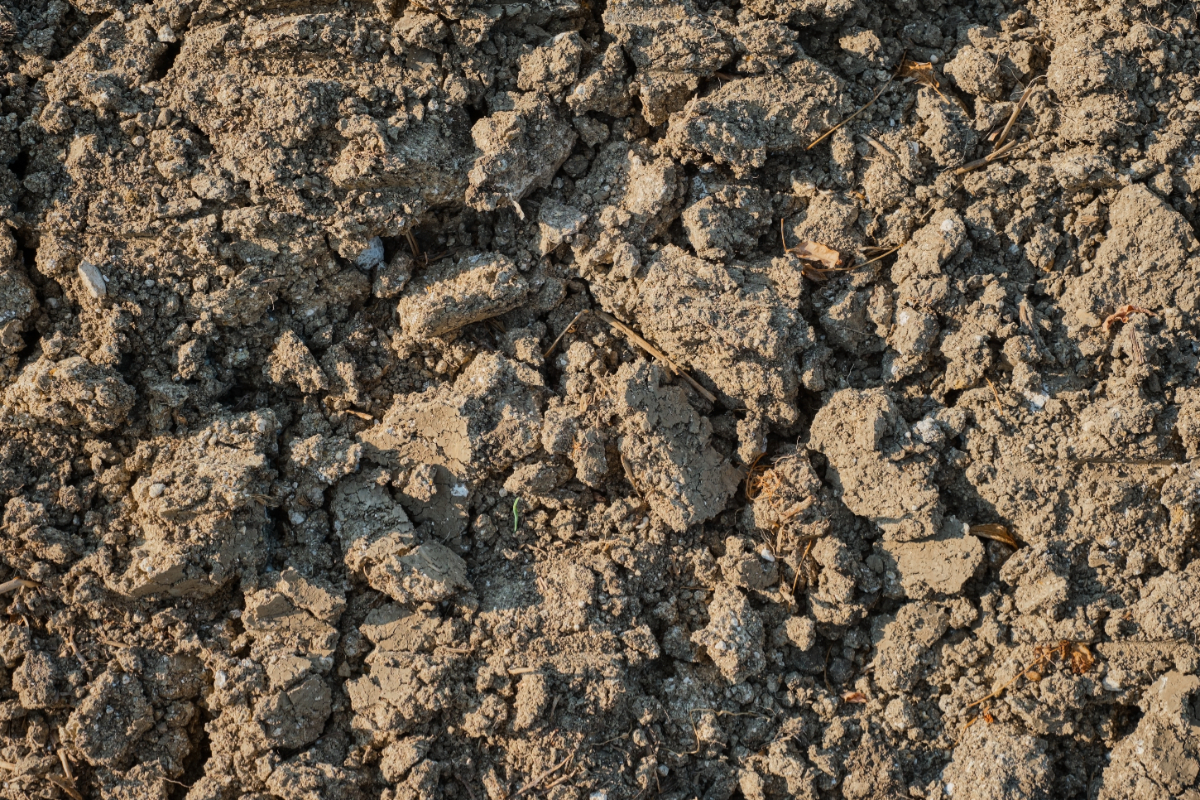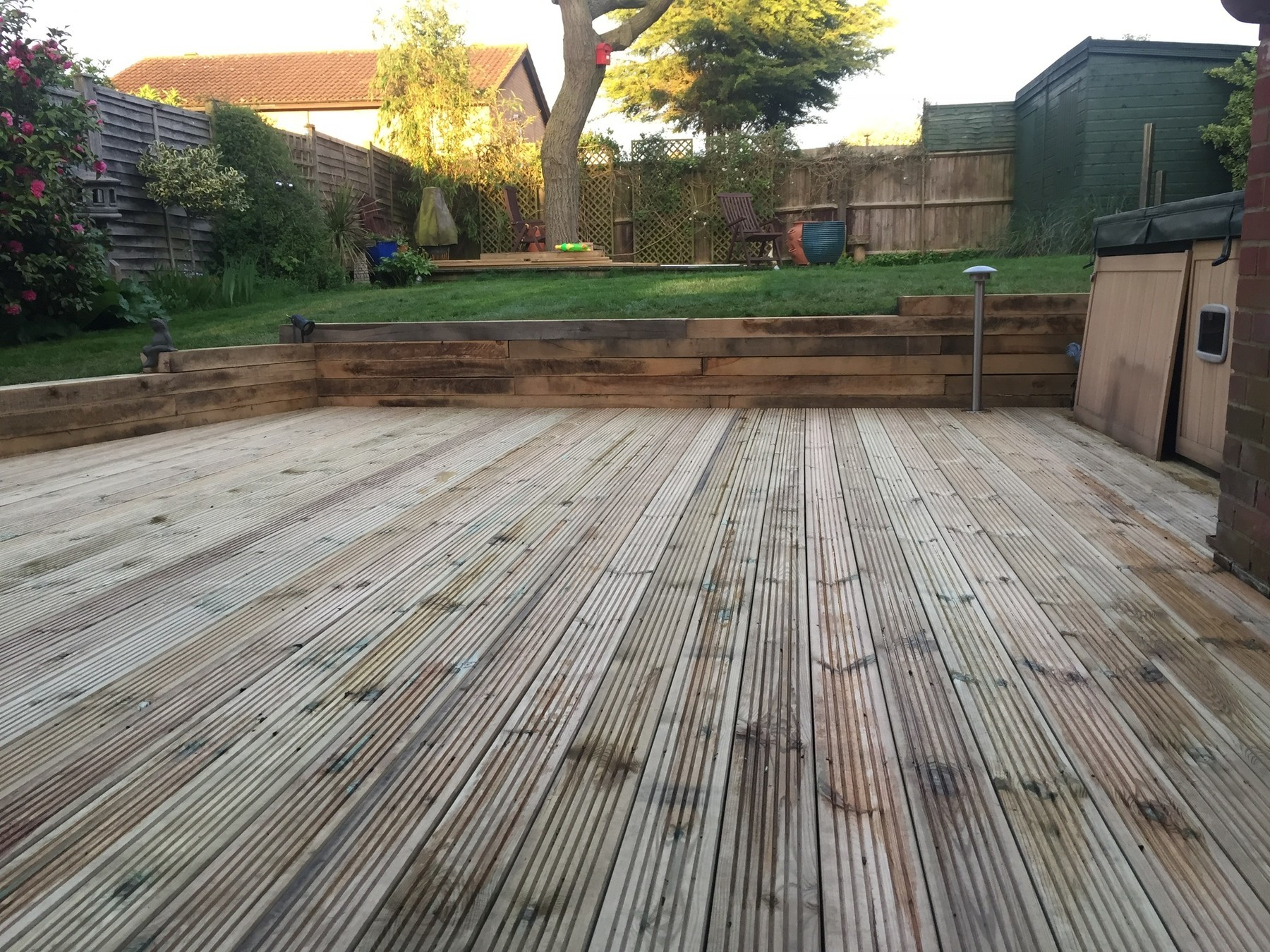Find out what to put under decking to ensure a stable, durable, and well-maintained structure.
Learn about the importance of a weed-proof membrane, gravel for drainage, and support blocks or concrete slabs to create a solid foundation.
Discover how proper under-deck preparation can prevent weed growth, improve stability, and promote drainage, extending the lifespan of your decking.
Gravel
When planning to lay decking, placing gravel underneath offers various benefits. Gravel provides a flat surface, making the decking easier to place and more stable. By forming a solid base for the decking joists, gravel provides a reliable foundation. One of the main advantages of gravel is its improved drainage. Gravel lets rainwater pass through easily, preventing water from pooling beneath the deck. This helps keep the deck boards dry, reducing the risk of rot and prolonging the life of your decking.
Begin by measuring the area where you want to place your decking. Dig a few inches down to create space for the gravel. Once you have done that, fill the space with gravel before laying the deck boards. Make sure to level the gravel layer using a spirit level to ensure an even surface. This step stabilises the ground and prevents any water accumulation under the decking.
Another benefit of using gravel is its ability to deter weeds. Weeds can be a nuisance, however, gravel makes it much harder for weeds to grow through. This makes maintaining your decking much easier and saves you time in the long run. Gravel provides a secure and reliable foundation, ensuring your decking is durable. By using gravel under your decking, you can create a stable outdoor space.
Mulch
When installing decking, one consideration is what to place underneath. One effective option is to put mulch under the decking. Mulch offers several benefits, adding both beauty and practicality to your outdoor space.
Placing mulch under your decking can help block weeds from growing. Weeds can be a nuisance, sprouting up and causing damage to your decking.
To start, you should prepare the ground by clearing away where the decking will be installed. After that, lay a thick layer of mulch to cover the entire area thoroughly. Mulch is also visually appealing.
Its natural look blends into garden environments, adding to the quality of your outdoor space. Unlike gravel or sand, mulch is easier to handle due to its lightweight nature. This can make the installation process quicker and less physically demanding.

However, mulch does come with some drawbacks. One of the main cons is that it may not last as long as other materials such as gravel or sand. Over time, mulch can decompose, requiring you to replace it periodically. Water can also seep through mulch quite easily, causing issues like mould.
Therefore, it’s vital to check the weather conditions in your area before deciding whether mulch is the right choice for your project. In terms of eco-friendliness, mulch is a favourable option. It's often made from bark, wood chips, or leaves, which are biodegradable. This makes it an eco-friendly choice compared to synthetic options.
Additionally, mulch can improve the quality of your soil over time. This can benefit any plants or greenery you have surrounding your decking. Using mulch under your decking offers several advantages such as weed prevention, aesthetic appeal and environmental benefits. However, it does require ongoing maintenance and may not be ideal for areas with heavy rainfall.
Sand
Using sand as a base for your decking can offer many benefits and is a practical option to consider. Sand provides a solid and stable foundation for your decking boards and joists. Begin by measuring your decking area and excavating the ground to a suitable depth.
Fill in the dug-out space with sand and use a spirit level to ensure the surface is flat and even. One advantage of using sand is how easy it is to use. You can easily shape and level it to create a smooth surface. This makes the process more straightforward and helps to fill in gaps.
Additionally, sand improves your drainage by letting water pass through; preventing rot and decay in your decking. However, sand can shift over time, particularly in areas that experience heavy rainfall. This shifting may call for occasional checks and maintenance to ensure the sand remains level. Using sand under your decking is a simple yet efficient method to prepare the ground. It creates a stable, level surface, while promoting good drainage. Placing sand under your decking ensures that it remains durable and well-supported.
Soil
Using soil under your decking is a straightforward and natural choice. Typically, it’s the default option since it requires the least amount of materials. To begin, check the ground where your decking will be placed. Ensure it’s level and free from large rocks or obstacles.
Before you start building, it's beneficial to remove excess turf or plants. Then, level the soil with a spirit level to create a flat surface for your deck boards.
One benefit of using soil is that it contains natural nutrients which can support your garden. This makes it a practical option for those wanting to keep their garden as natural as possible.
However, using soil does come with its challenges. Unlike gravel or sand, it doesn’t provide the same level of drainage. Standing water can cause rot in the wooden joists and boards.

To combat this, it's a good idea to consider laying a weed barrier. This layer prevents weeds from growing and keeps the area looking tidy. Additionally, you must take steps to protect the wooden parts of your deck from moisture. Applying a protective sealant to the wood can help prevent rot. Using soil is a natural way to lay your decking, but it requires careful planning and consistent maintenance. With proper care, your decking can last for many years.
How To Decide Which Material Is Best For You
Deciding which material to place under your decking depends on several factors. First, you need to assess the ground where you plan to lay the decking. If the area is prone to holding water, options like gravel or sand may be your best bet. Gravel is great for drainage and can protect your decking from rot. Sand is another good choice for water-prone areas. It's easy to lay and level but may need regular maintenance to remain stable over time.
Next, think about the appearance you want to achieve in your garden. Mulch can create a natural, attractive look while also serving as a weed barrier. However, for those who prioritise long-term durability, gravel is a strong contender. Gravel has a longer lifespan than mulch and needs less maintenance. However, it can be harder to install initially.
Another point to consider is the ease of installation. If you prefer a simpler, more natural option, using soil might be the best way forward. However, using soil can be labour-intensive as you need to prepare the ground. Budget is another critical factor in your decision-making process. Mulch is relatively cheap but it demands regular replacement. Gravel, while more durable, can be more expensive upfront. Sand sits somewhere in between price-wise. Soil, being free, is the least expensive choice, but bear in mind the extra labour that comes along with it.
Finally, consider how much time and effort you're willing to dedicate to maintenance. Mulch requires frequent replacement, whereas gravel and sand need less upkeep. Soil also calls for significant ground preparation. In conclusion, choosing the right material depends on several factors specific to your garden.
Those include water drainage, visual appeal, installation difficulty, and your budget. Carefully evaluate these factors, and you’ll be able to choose the most suitable material for you. With thoughtful planning, you can make a decision that will keep your decking looking great for years.
Are you looking for garden decking installation near you? If you require garden decking in Milton Keynes, Buckinghamshire, contact us today. Our garden design experts can supply and install beautiful garden decking for you and your family to enjoy for years to come.

